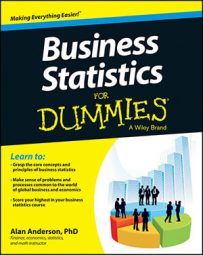Market participants — equity analysts, risk managers, portfolio managers, traders, and economists — must be able to accurately measure and model the risk and return of financial assets. As a starting point, modeling the properties of asset returns requires the choice of an appropriate probability distribution — a statistical function that describes all the possible values and likelihoods that a random variable can take within a given range. This distribution must have properties that match up with actual historical experience with asset returns.
One of the most popular choices for modeling the properties of asset returns is the normal distribution. The normal distribution offers several advantages in this case:
It is a continuous distribution, defined for an infinite number of values. This aspect is important because the number of different returns that can occur is also infinite.
It is symmetrical about the mean; a balance exists between the probability of returns that are below the mean and the probability of returns that are above the mean.
The probability of extreme outcomes (well above or below the mean) is quite low; for financial returns, extreme outcomes occur quite infrequently.
Another advantage of the normal distribution is that it's additive — the sum of normal random variables is also normal. In other words, if the returns to a single asset are normal, then the returns to a portfolio of assets are also normal.
Unfortunately, asset returns don't match up perfectly with the normal distribution. In particular,
The actual likelihood of extreme outcomes (extremely large gains or losses) is greater than that implied by the normal distribution. (For this reason, the actual distribution of asset returns is often said to have "fat tails.")
Asset returns aren't symmetrical about the mean. A bias toward negative returns is more common; more formally, asset returns are often negatively skewed — when the left tail is longer due to the mass of the distribution being concentrated on the right side of the image model.

